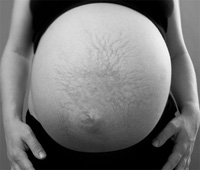What is IVF?
IVF is when the egg and sperm from both parents are removed from their respected bodies and are fertilized in a controlled medical setting. There are a series of steps that every person goes through when completing the IVF cycle. Fertility drugs: Fertility drugs are the first part of the IVF process because they allow a female’s body to start producing more than one healthy egg. The chances of pregnancy increase with the number of eggs that are released during ovulation. Hormone Injections: The second step is a series of hormone injections. In normal IVF, the female will take daily injections for up to 12 days. These hormones act on the ovaries to help increase natural egg development and is used to increase the number of healthy eggs. The Retrieval: This step is for both parents. This is the time where the egg is harvested and the sperm collected so that fertilization can occur. The eggs are harvested and the more mature eggs are used for the process. The sperm is cleaned and the strongest sperm are used for the procedure. The egg and the sperm are combined and left to incubate on a plate, which leads to fertilization. The Transfer: The doctor will determine if fertilization has occurred through the production of the embryo. The embryo, at this stage, is a small bundle of cells. These cells will eventually grow into a baby. The embryo should appear within 24 hours of the combining. Once fertilization can be determined, it is time for the transfer of the embryo into the mother’s uterus. Women will have been taking progesterone to help the uterus be healthy enough to support the embryo. Once the transfer is complete, it is up to the mother’s body to accept the fertilized eggs. In many cases, IVF clinics are legally allowed to insert no more than three fertilized eggs for every cycle of IVF. This number changes with age and with the degree of fertility issues. The whole cycle to this point can take anywhere between 4-6 weeks to complete.The IVF Calendar
Day 1: The IVF cycle starts on the first day of the female’s menstrual cycle. Once the menstrual cycle has started, the IVF office should be called to set up an appointment. Day 4: By the fourth day of the menstrual cycle, oral contraceptive should be started. 2-4 Weeks: Patient’s will continue to take the oral contraceptives until their doctor advises them not to. This period ranges from 10 days to up to 5 weeks. Week 1 Injections: During the first week of injections, an ultrasound will be conducted to determine the health of the uterus. Follicle stimulating hormone of FSH is started. This is the hormone that helps the female body produce healthier eggs for fertilization. Week 2 Injections: FSH is continued every day while blood tests are conducted to ensure that the hormones are safe for the individual to continue receiving. Week 3 Injections: The final round of FSH is administered followed by more blood work and an ultrasound. During this time progesterone is started to help the uterus create a lining that will allow attachment for the upcoming transfer. During this week, harvesting of the eggs occurs, and then within 24 hours to 5 days later, the transfer is concluded. Waiting 5 days allows the embryos to mature and increases their rate of successful implantation. After the transfer has been completed, the patient should be on bed rest for up to 72 hours to increase their chances of conceiving.IVF Pregnancy Calendar



